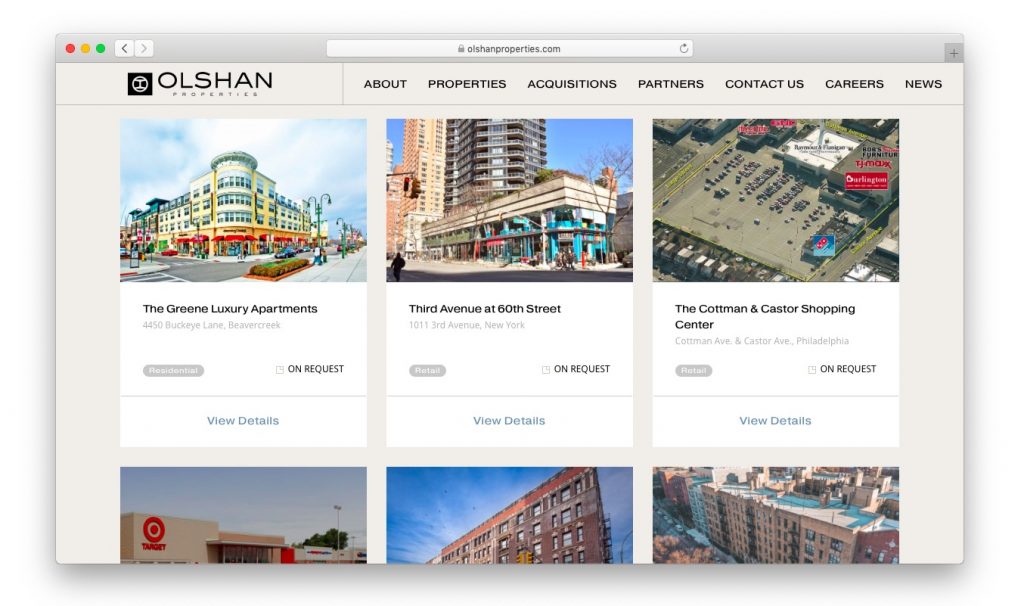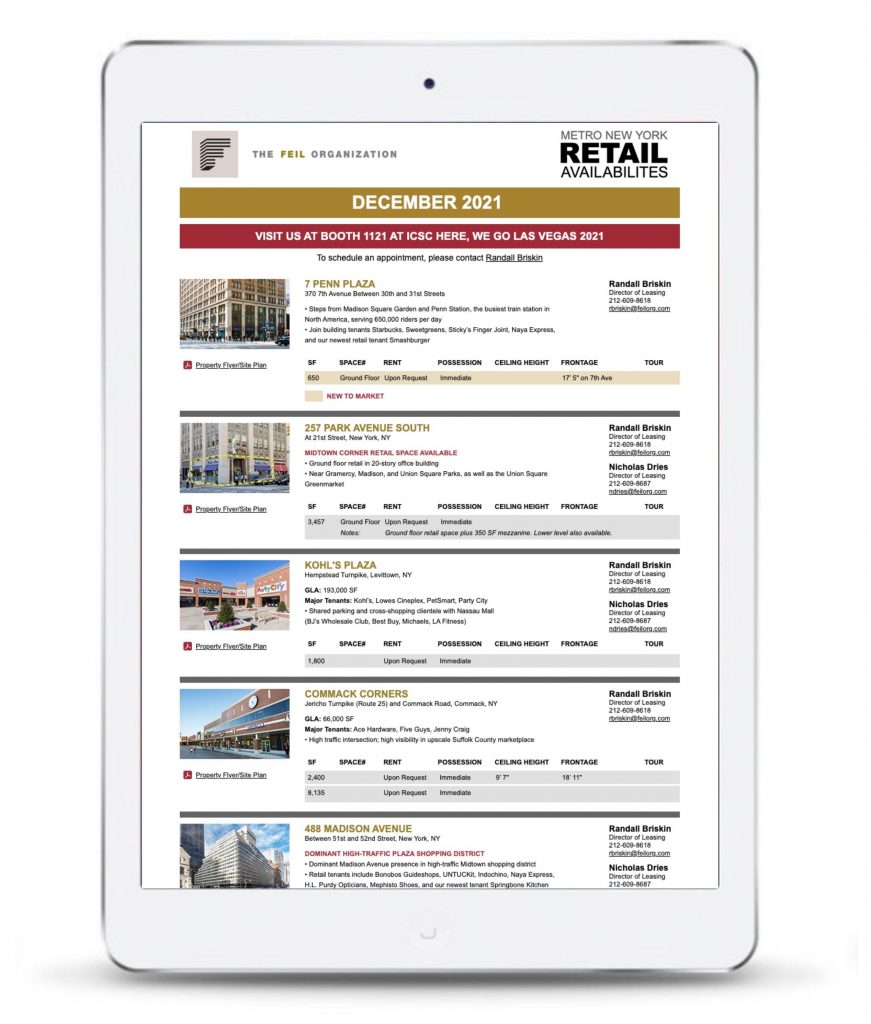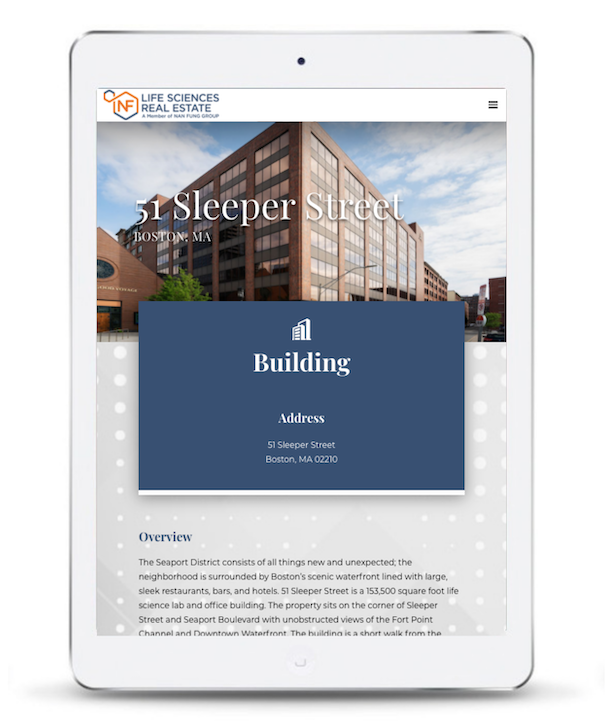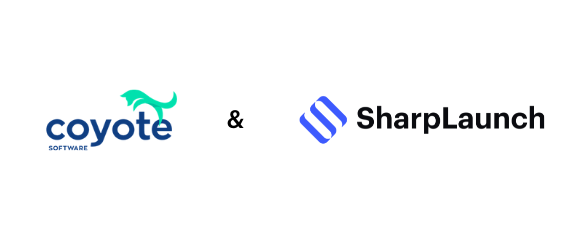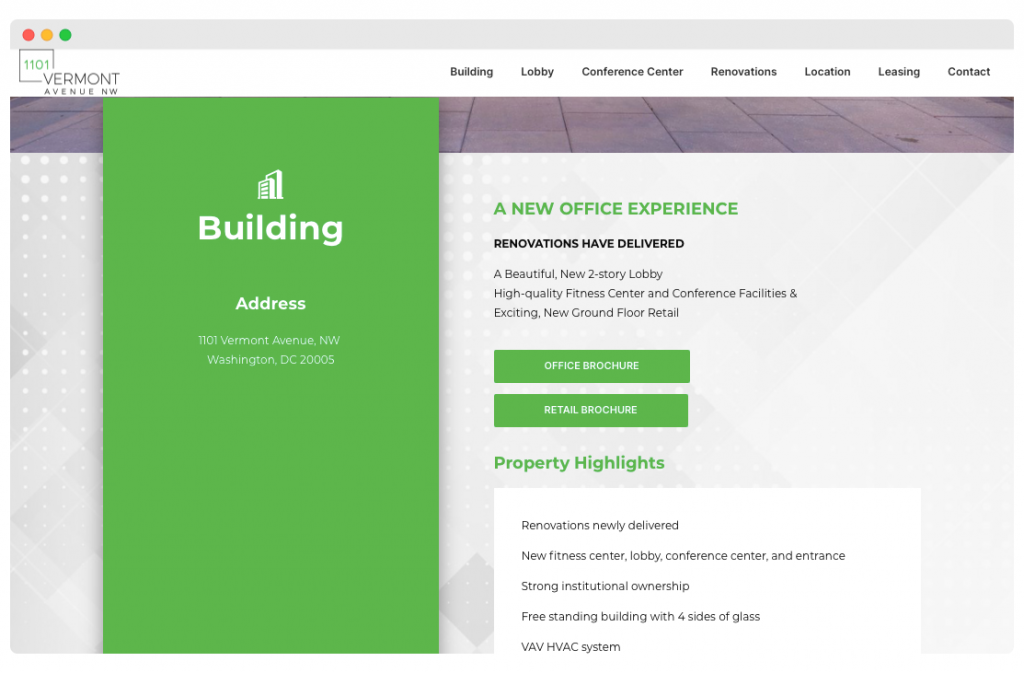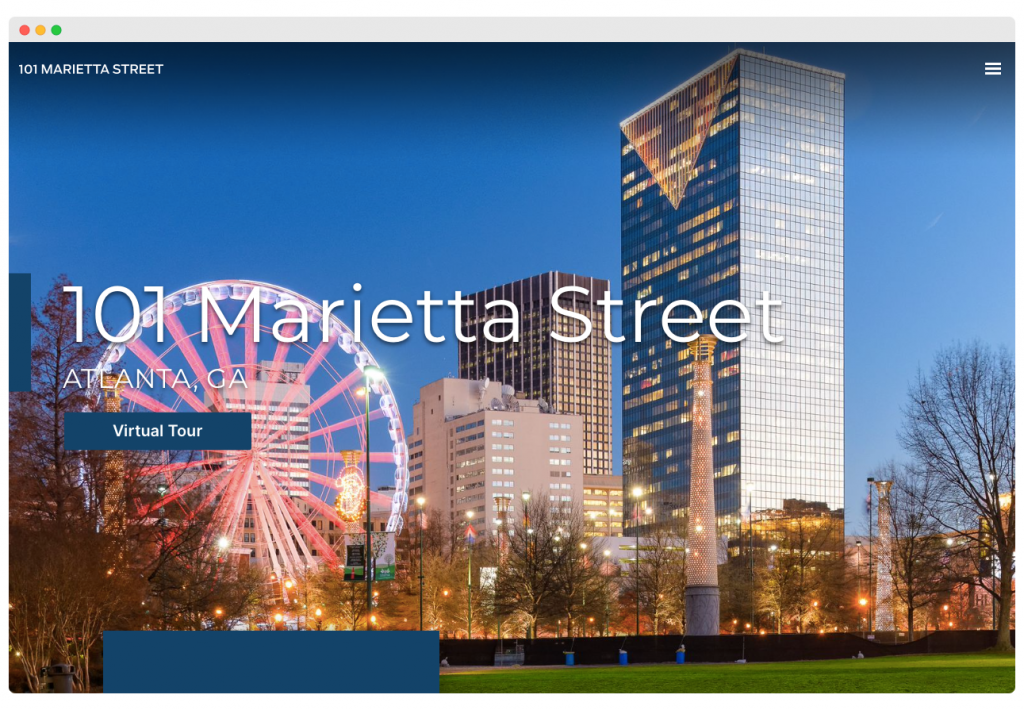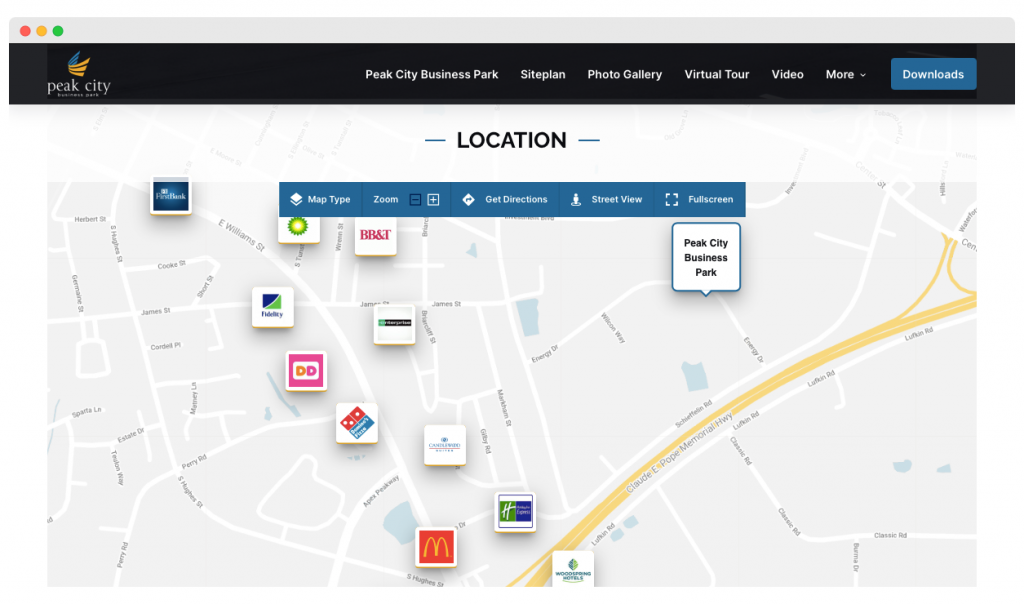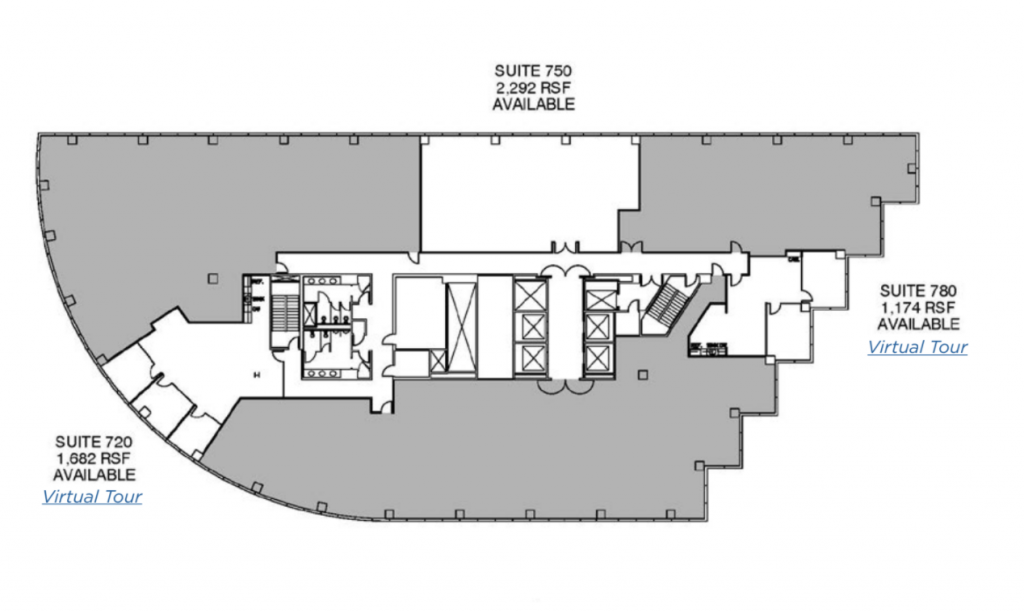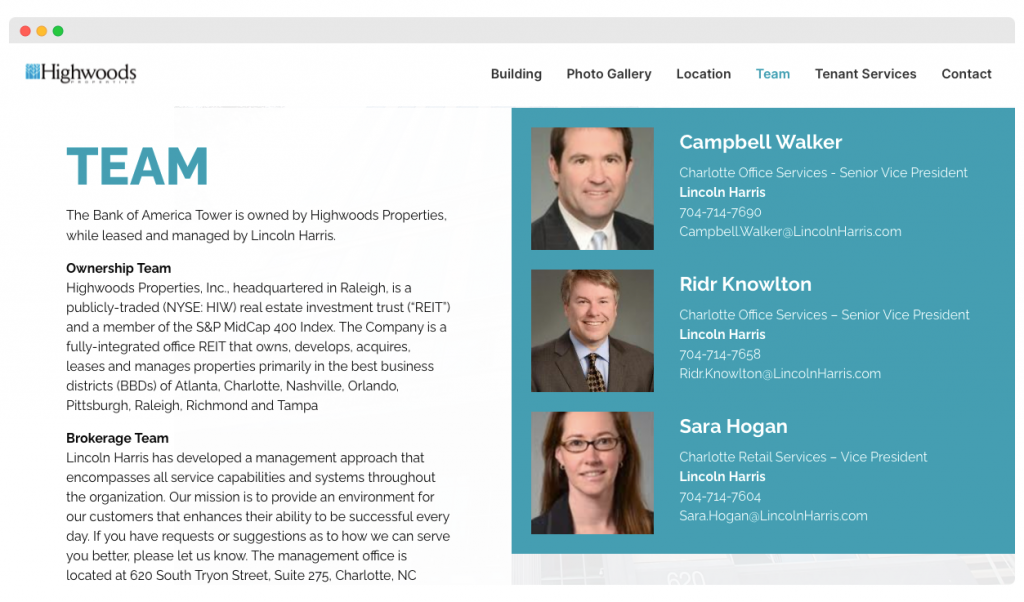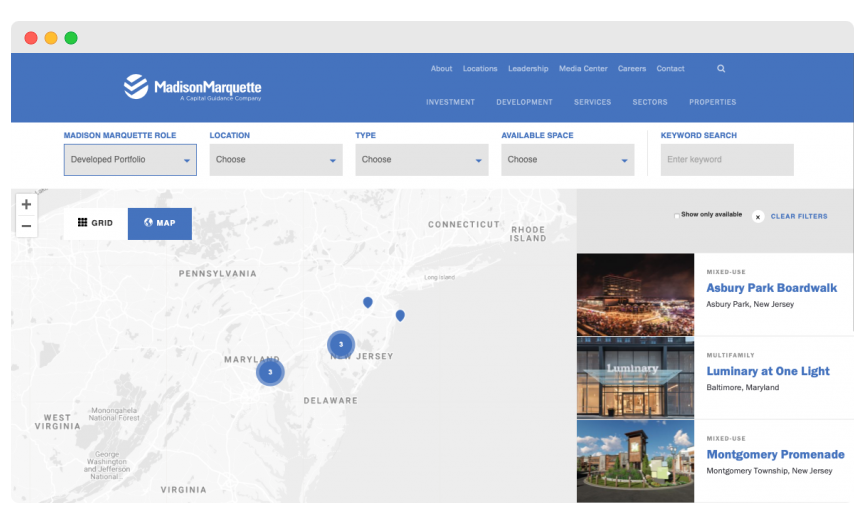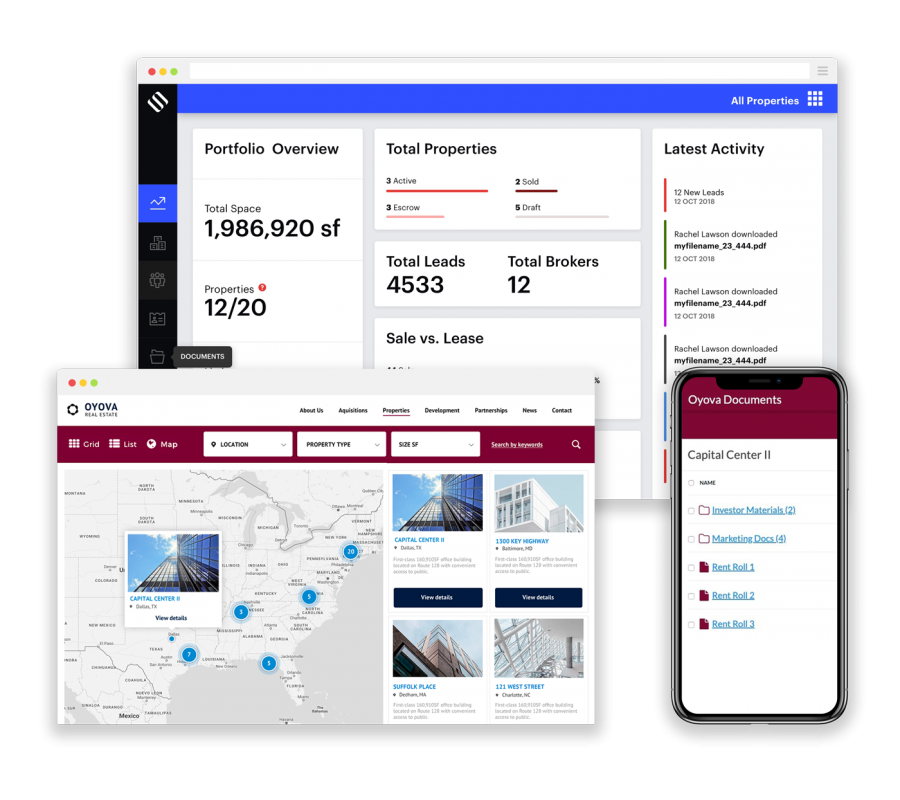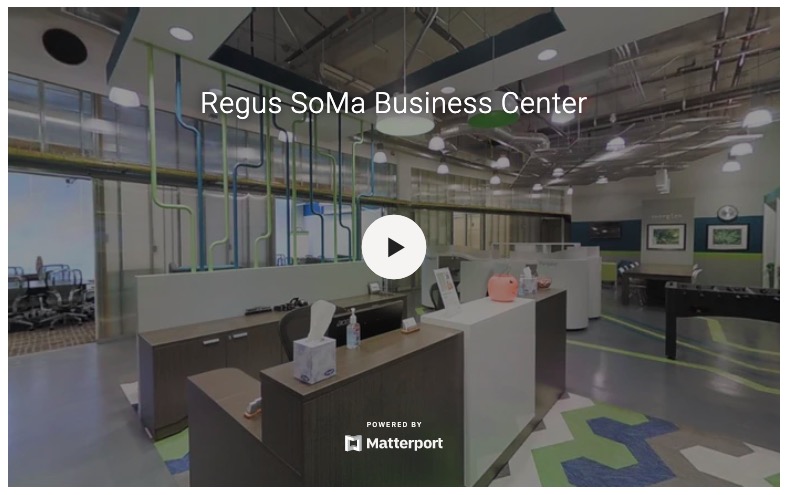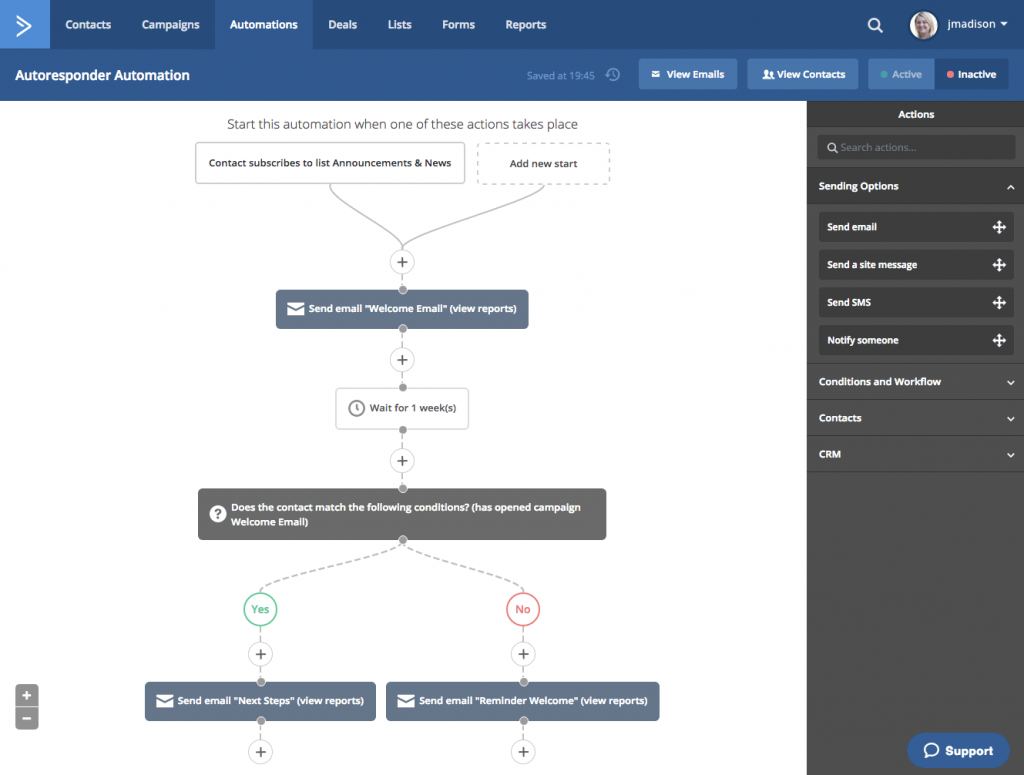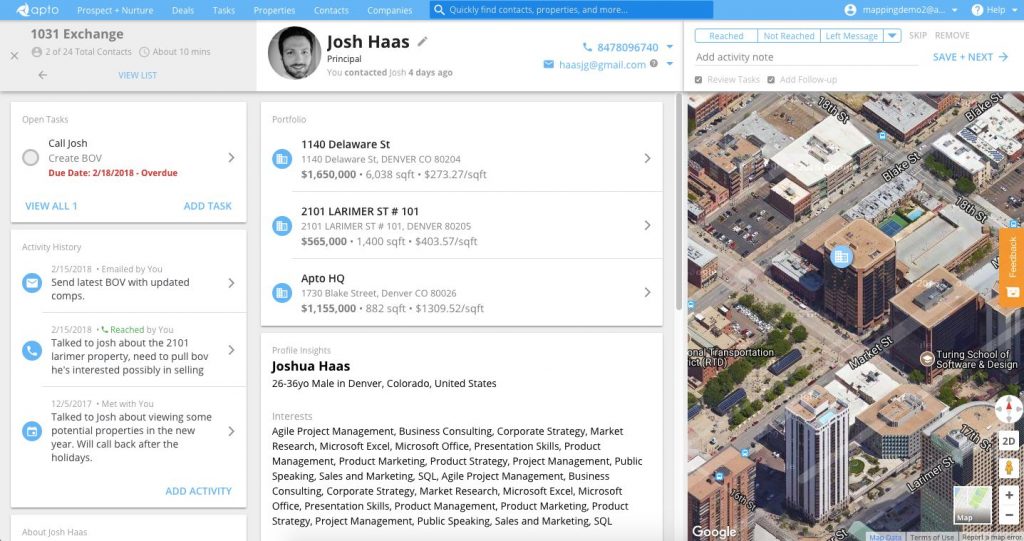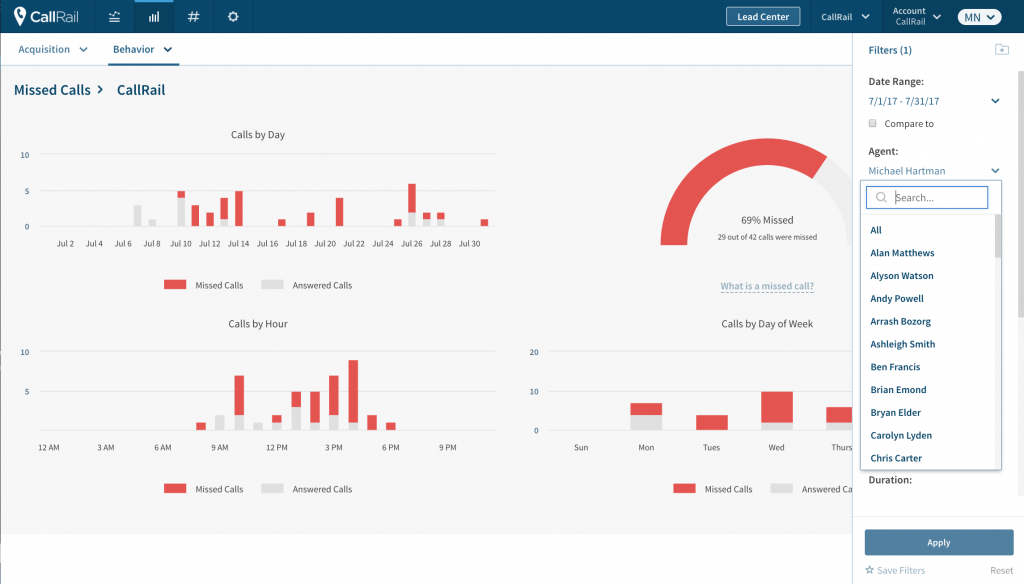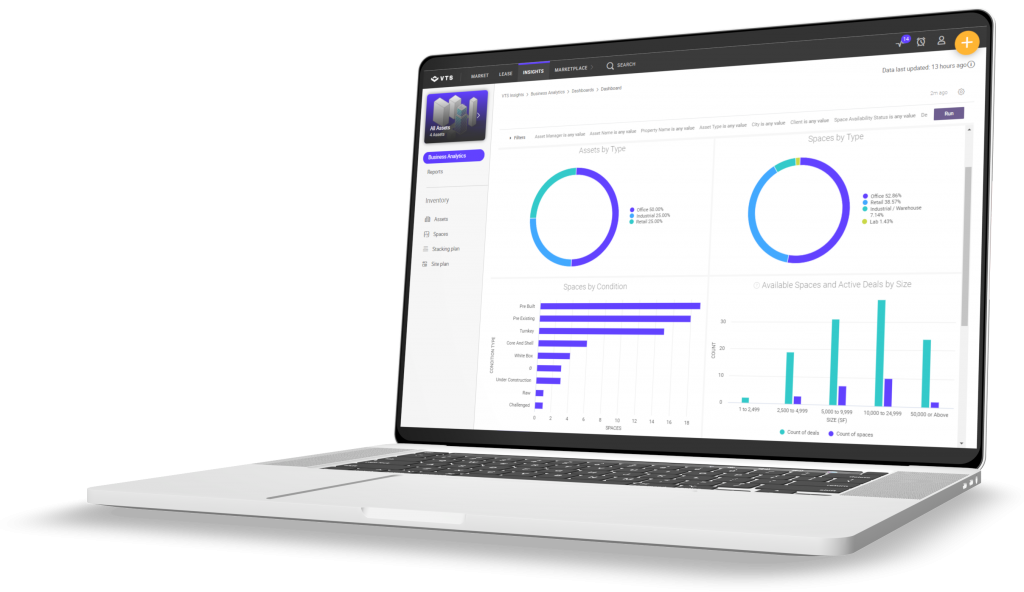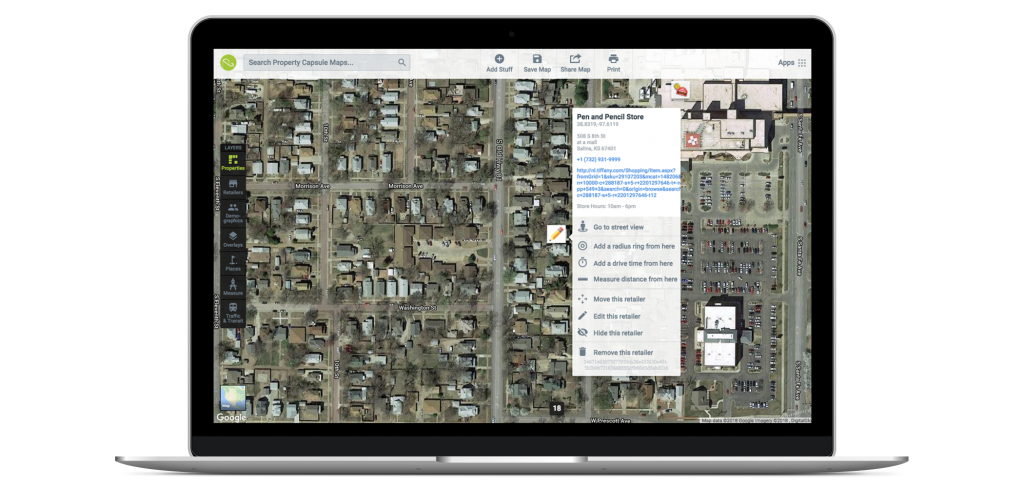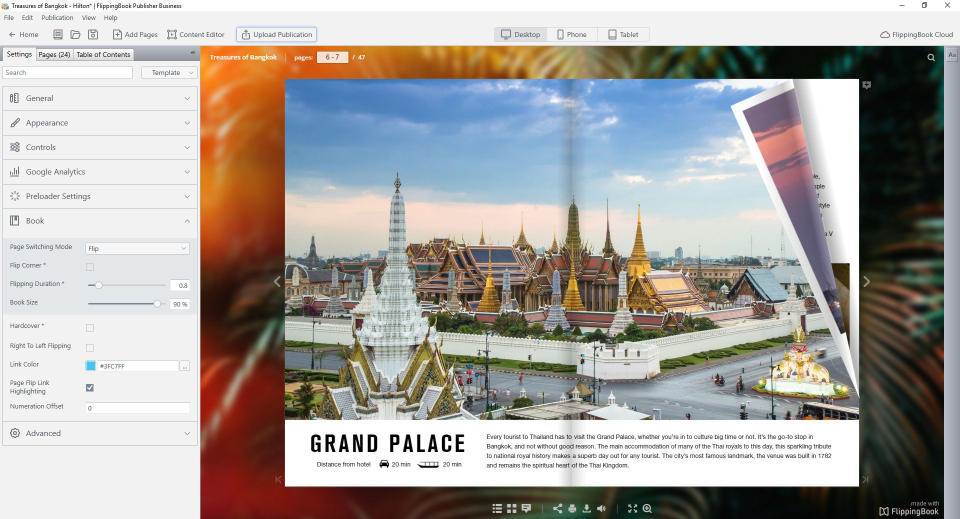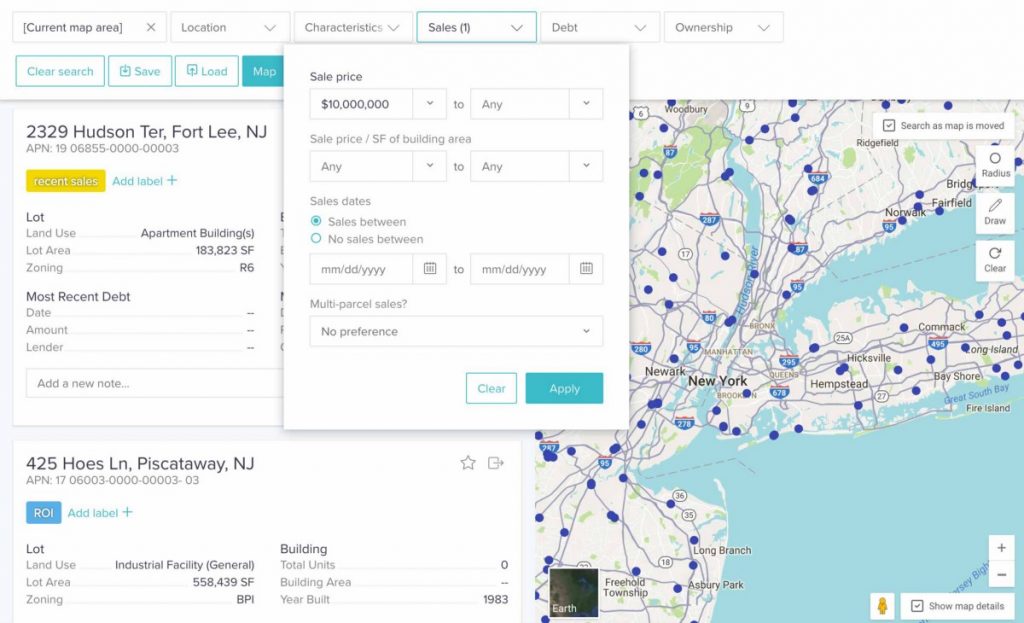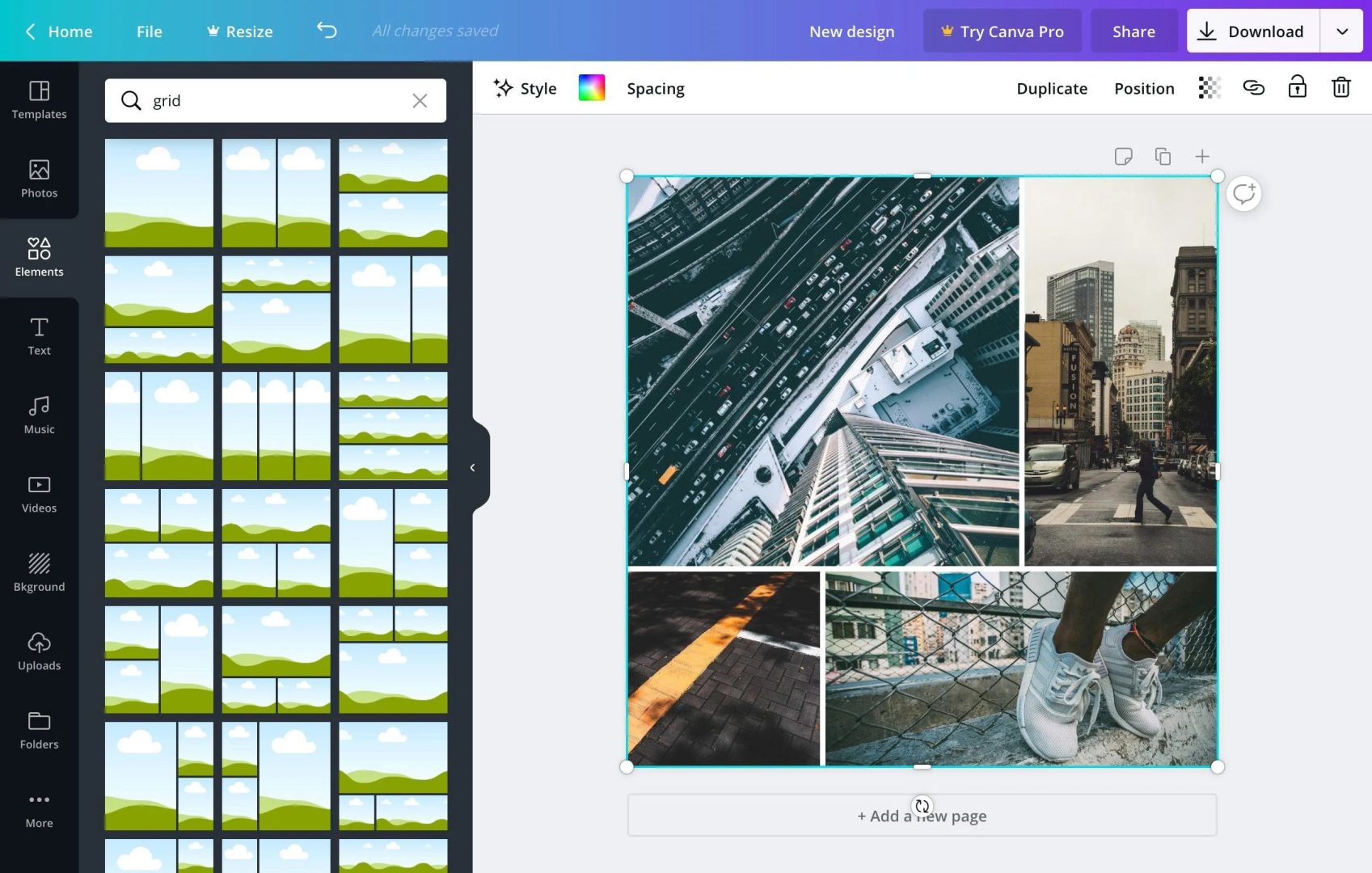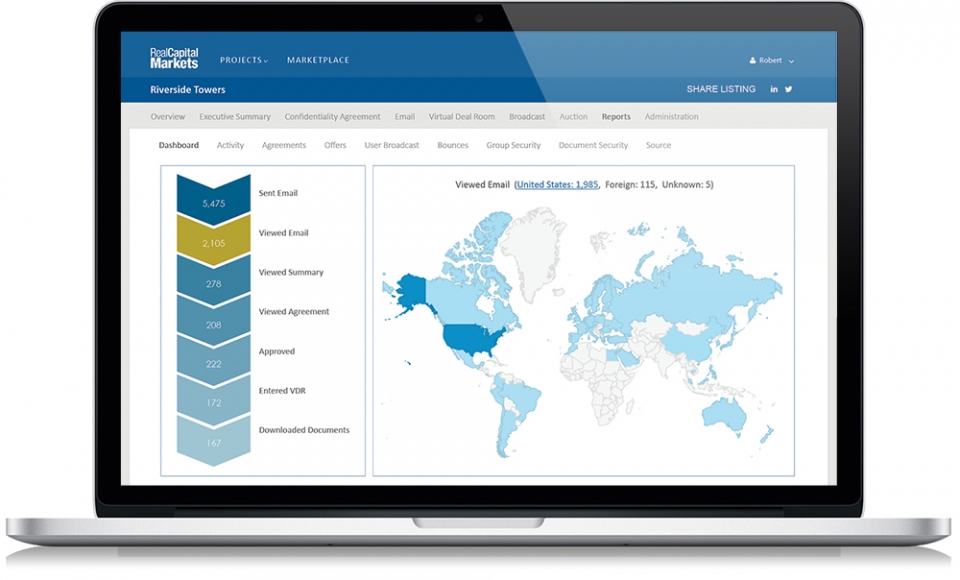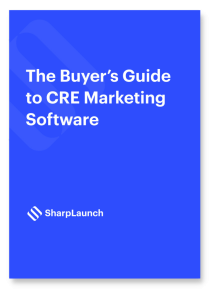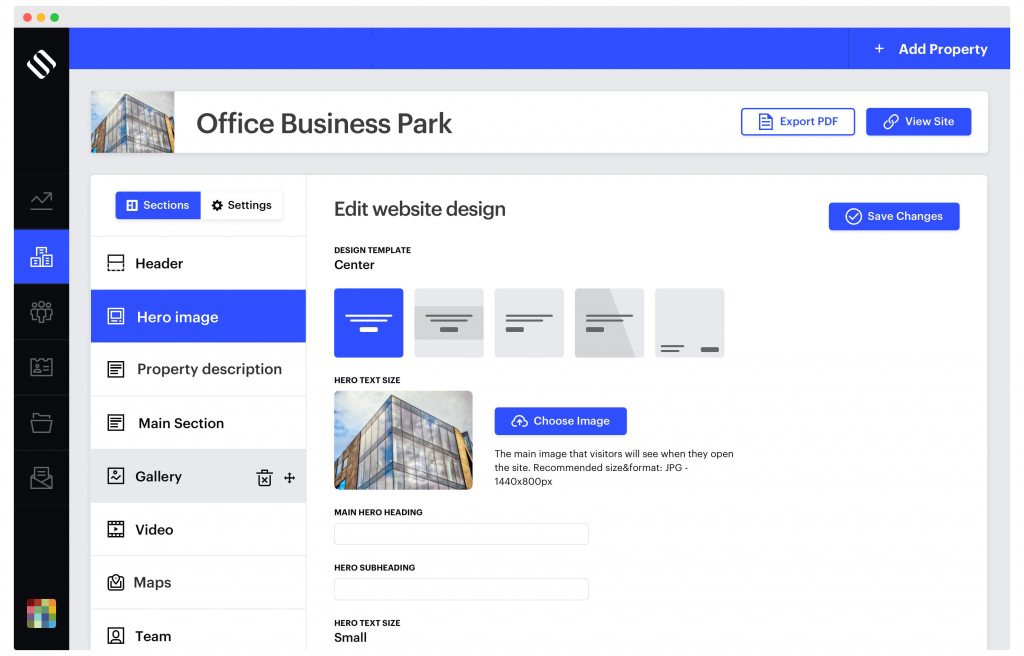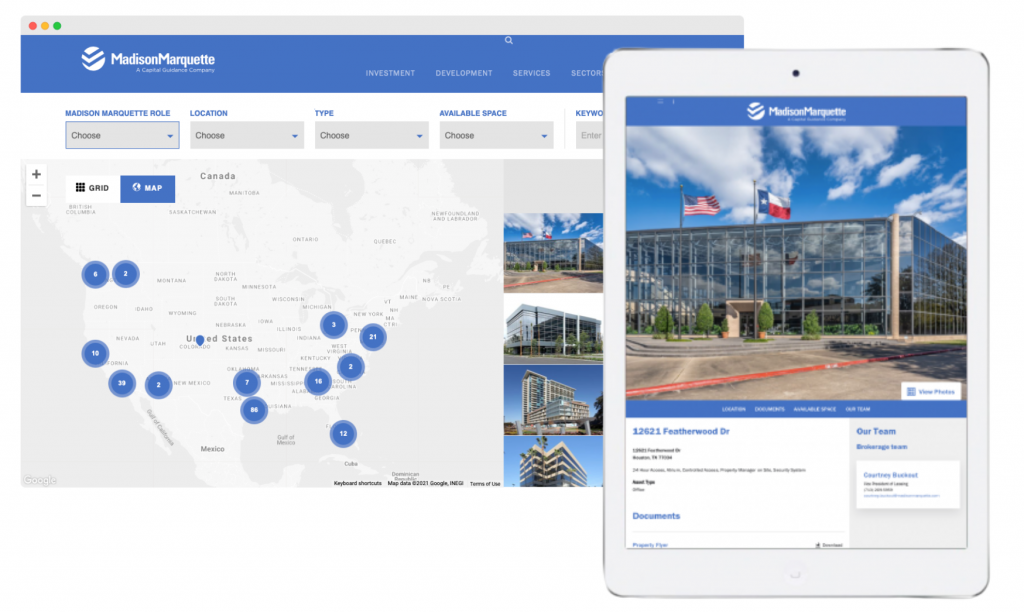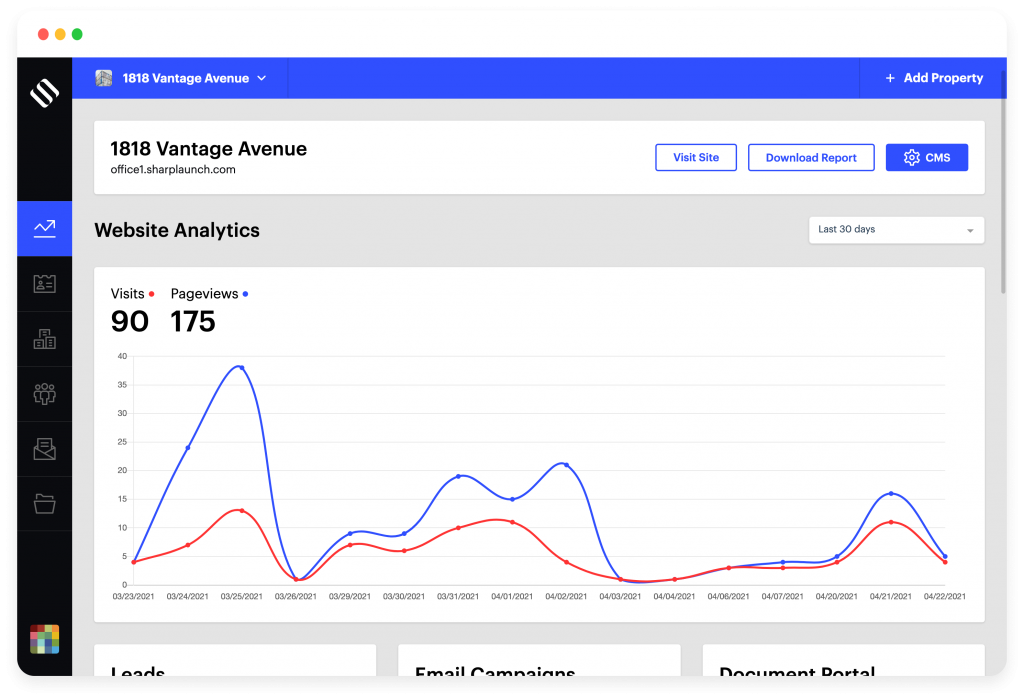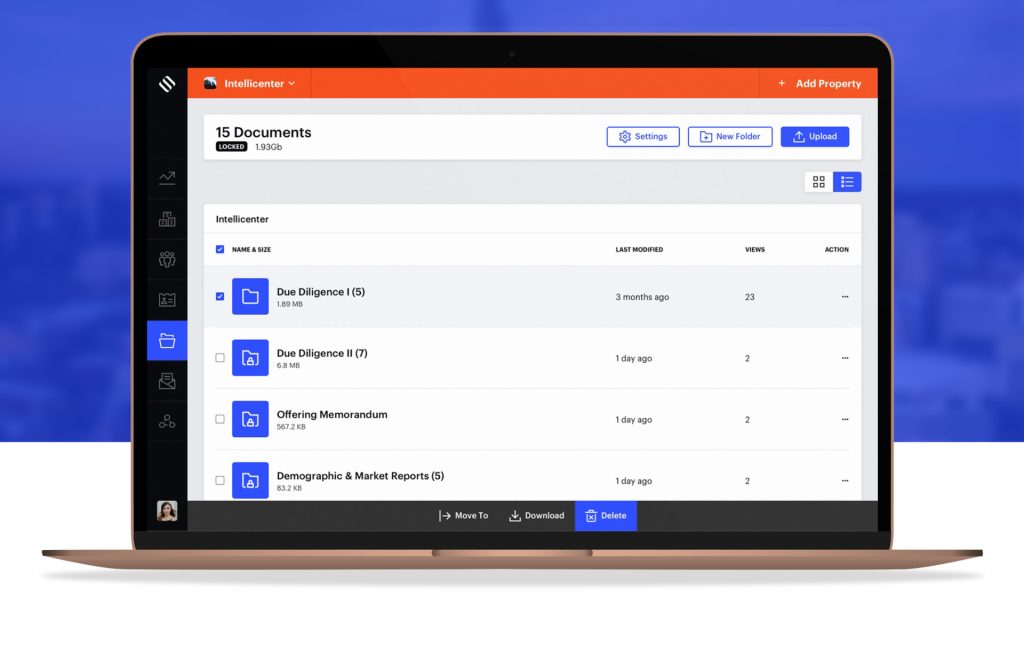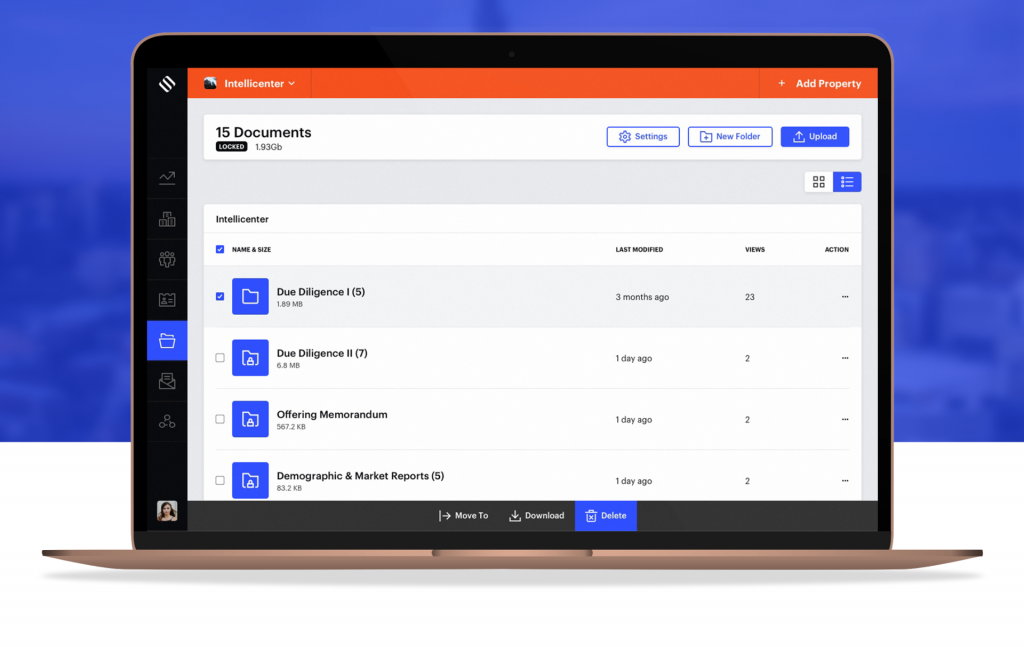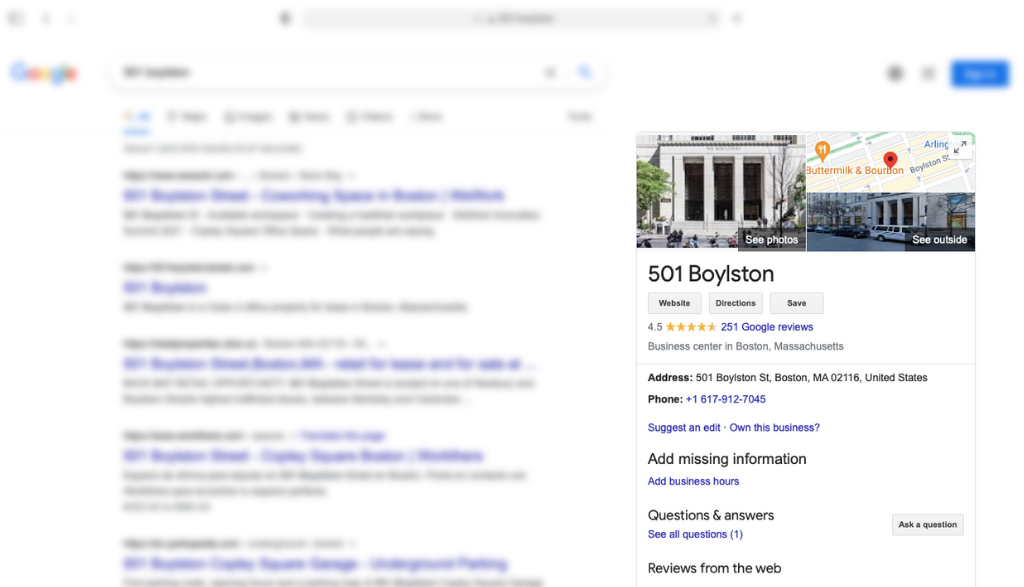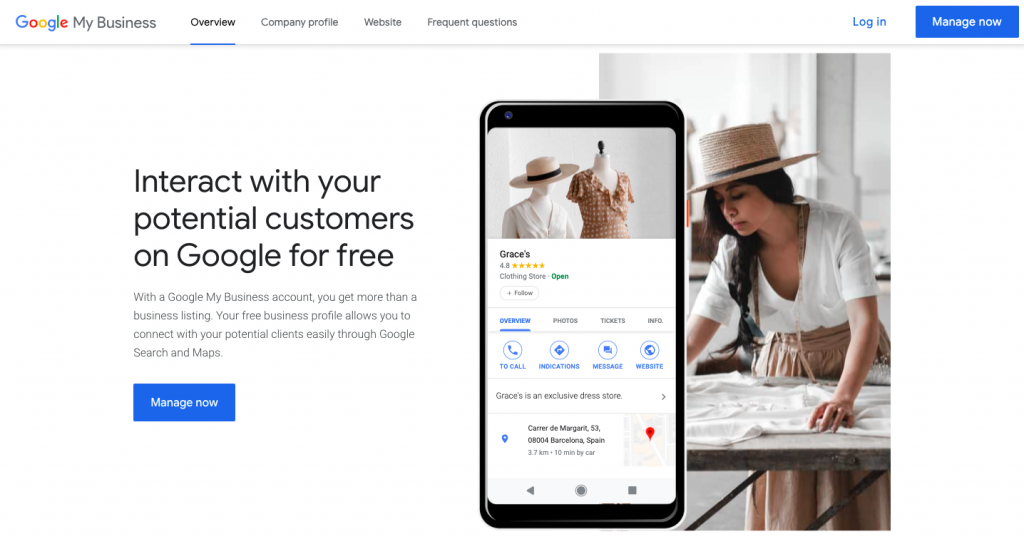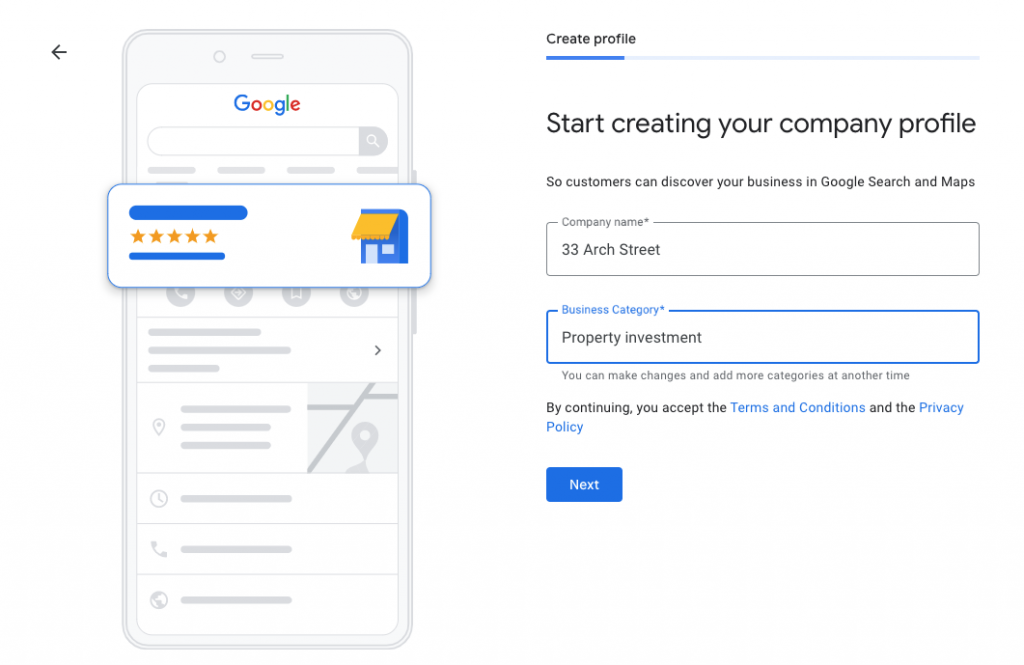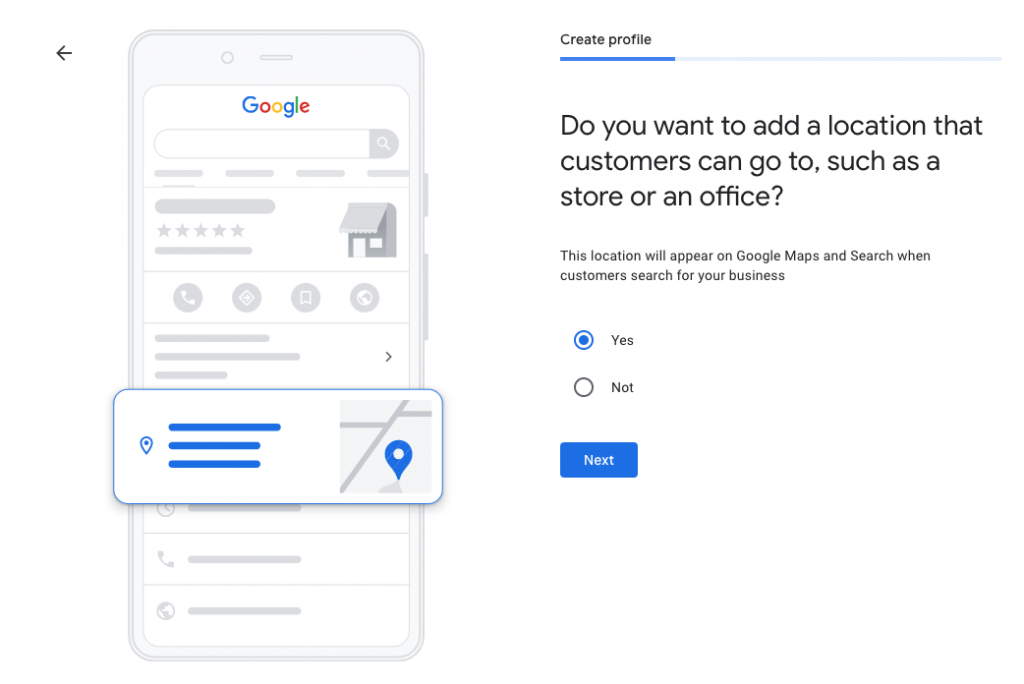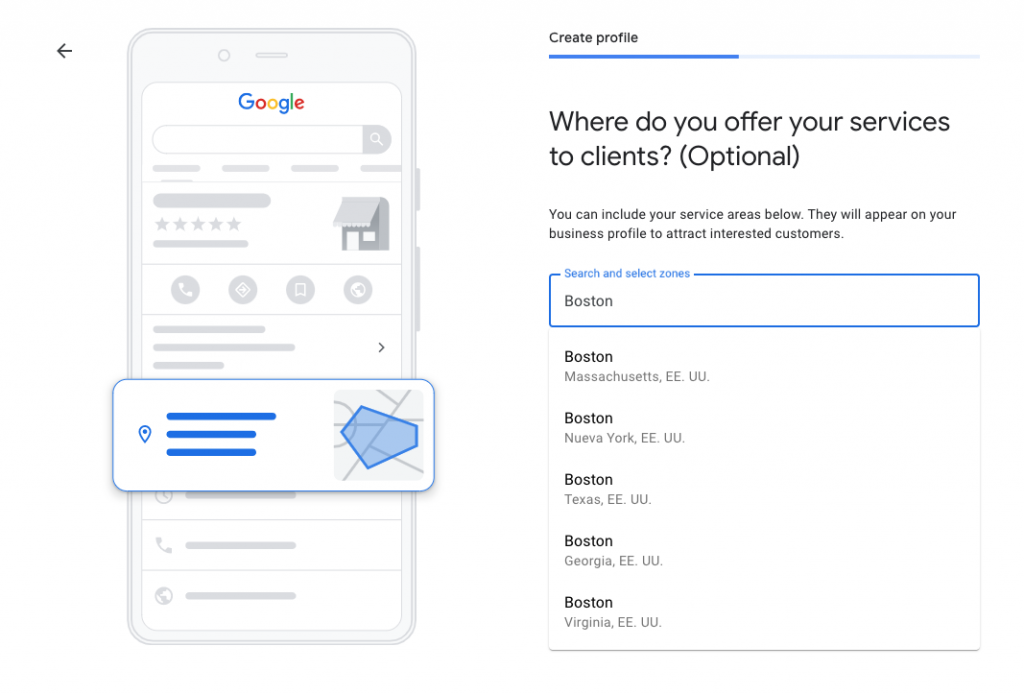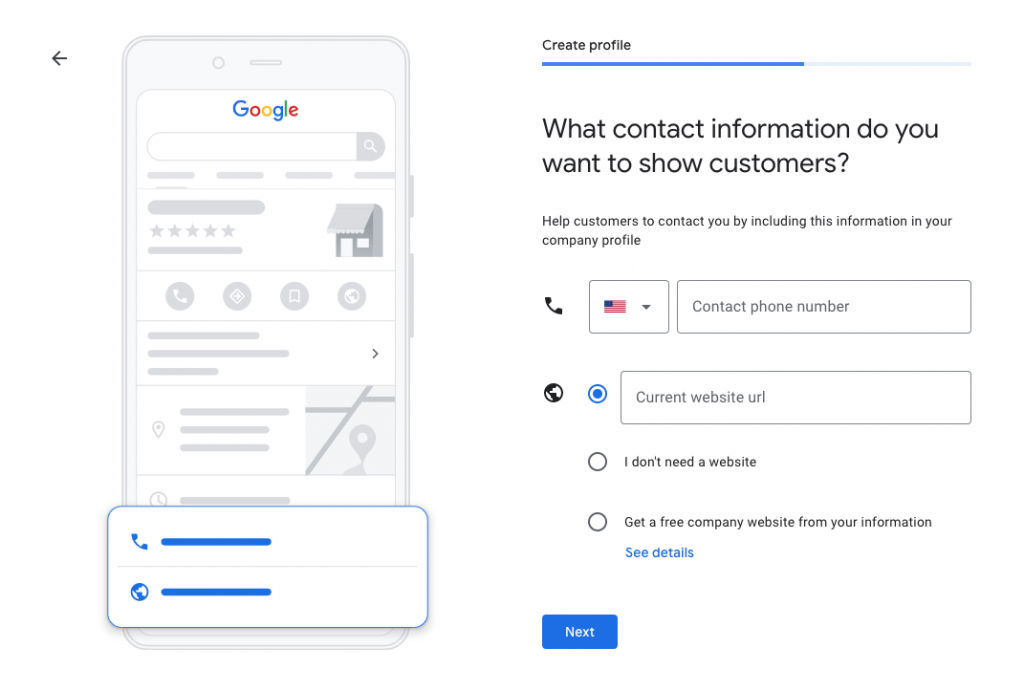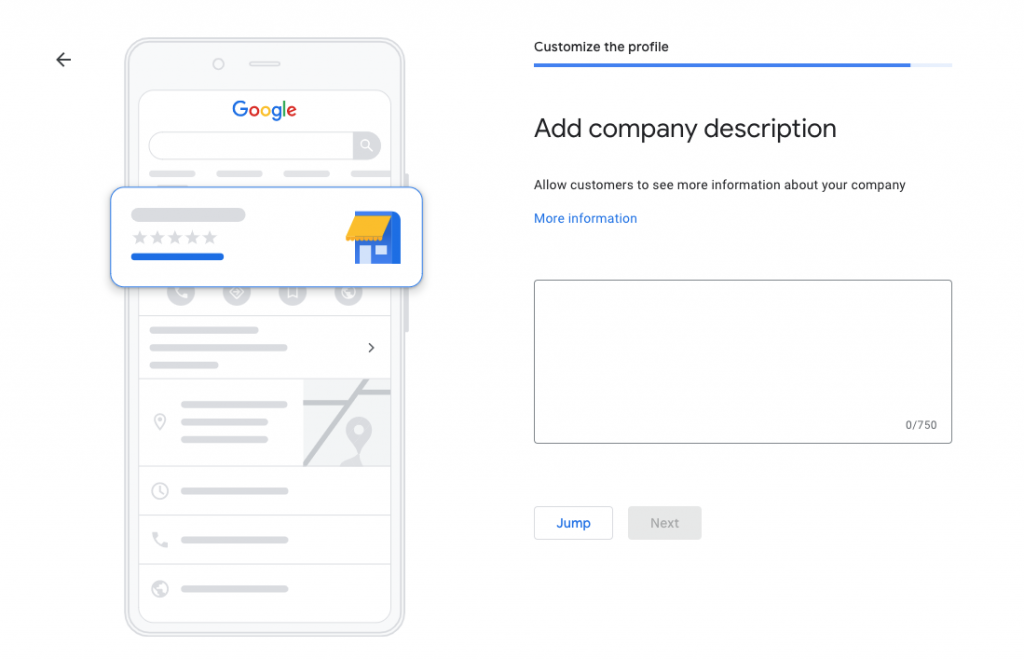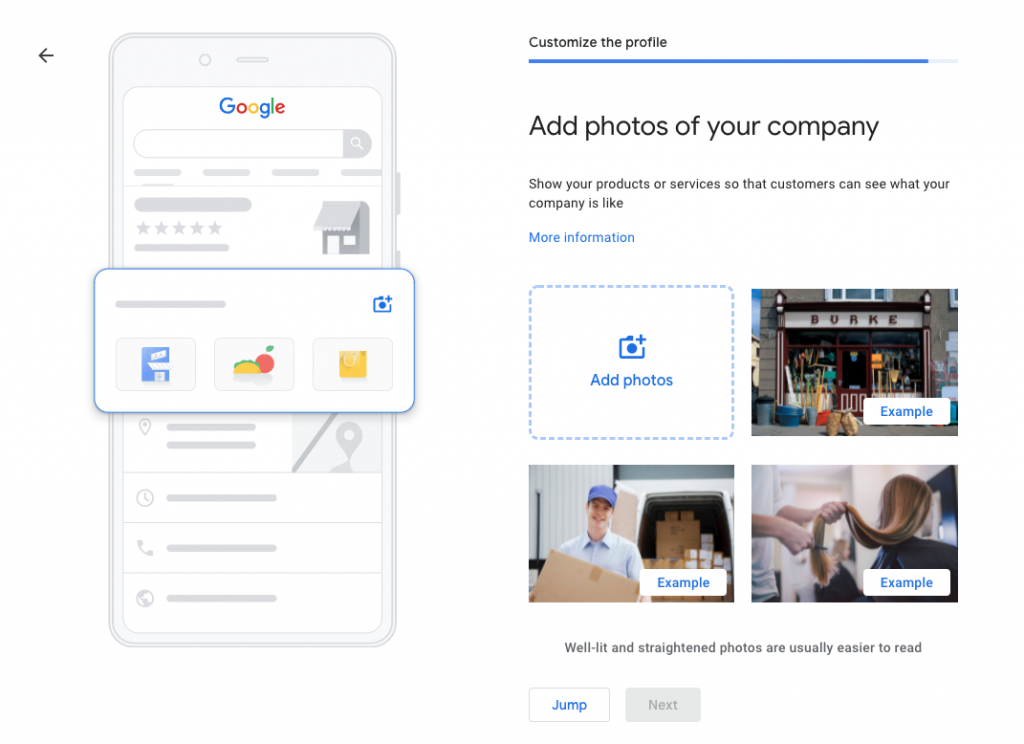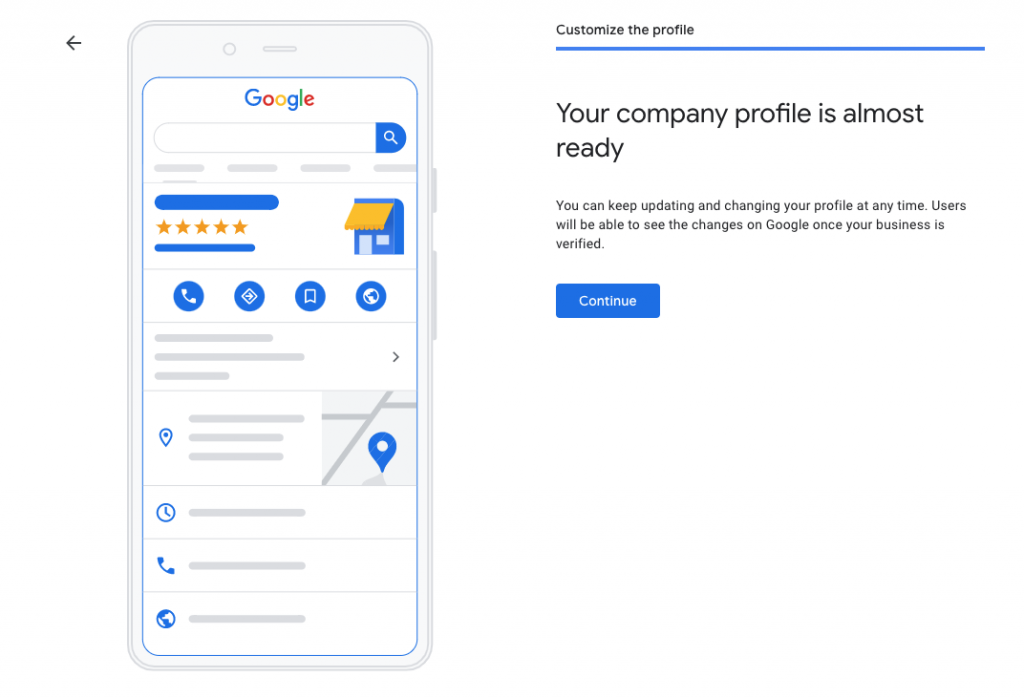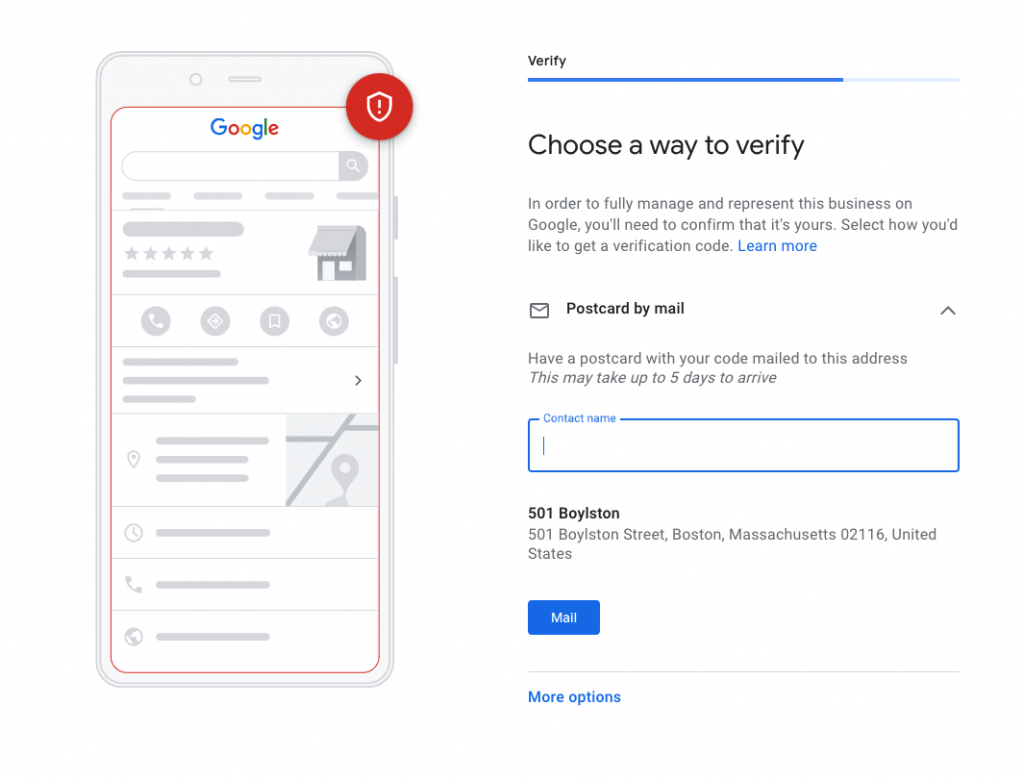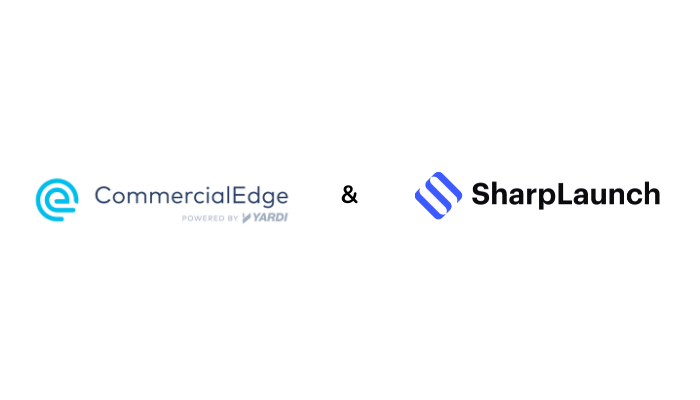As a CRE professional, you want to make a good first impression with any potential client and want to be able to keep tenants and investors hooked. In an ideal world, your company would be the only place they look when they need commercial space.
A strong digital presence plays an essential role in accomplishing this goal as today, people expect to have access to the information they want in an easy-to-use, engaging way.
If your CRE company doesn’t have a well designed, user friendly commercial real estate website, you’re probably missing out.
When you take steps to build an impressive digital presence, you increase your credibility and make your CRE company look leading-edge. The right websites and emails will help people learn about your listings — and keep those listings top-of-mind. Plus, a user-friendly, well-designed digital presence helps investors and tenants trust you more.
There’s a lot to be said for the ROI your company can unlock when you dive into boosting your brand in the digital space. Let’s look at ten significant ways your strong digital presence can add value today.
1. Expand your audience
While digital natives have naturally aged into the majority in the last few years, the pandemic has forced most people to embrace the virtual world in new ways.
People are spending most of their time online these days, whether by working remotely, socializing via video calls, ordering groceries and meals, shopping for an ever-growing array of necessities, and catching up on social media.

Those who might have been hesitant to complete certain transactions digitally before are being pushed into digital adoption at a rapid clip.
All of these experiences are building a comfort and ease with a new virtual way of doing things in life, and this extends to all areas, commercial real estate is no exception.
You now have a prime opportunity to tap into this new, captive audience where they are spending most of their time – in front of their screens.
2. Extend your reach
At the same time, businesses are rethinking working spaces and headquarters. Employees are scattered across the globe, working remotely from home offices far removed from where their companies are located.
Traditional hotspots for different industries are changing as firms that once flocked to specific cities or areas are realizing that they have more freedom of location.
This means that potential clients might hail from much further afield and have different profiles for your particular market than before, so a strong digital presence becomes critical for both appealing to new interests and to stay nimble for changing trends in your area.
Enhancing your digital presence now gives you the freedom and flexibility to seize new opportunities as they arise, by diversifying your offerings and tweaking your presentations to attract new types of prospects.
3. Make a memorable first impression
Within the first moments of landing on your commercial real estate website, prospects will make a snap judgement about your firm based on your site’s aesthetics, ease of use, and how it compares to others they’ve recently visited.
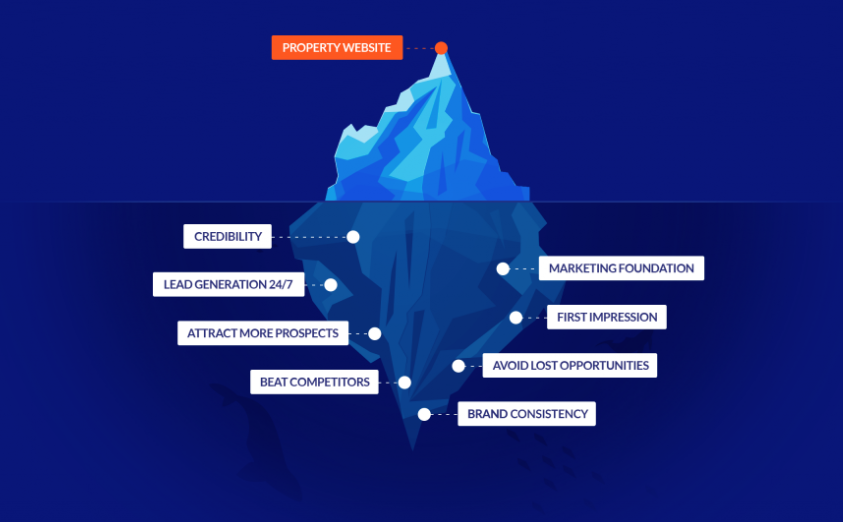
A powerful but accessible web presence that uses modern, high-quality design will instill a sense of authority and trustworthiness. You want every visitor to have a memorable experience that will last them through their initial visit and beyond, even as they visit the digital assets of your competitors.
This applies to your main site, as well as every individual property site you create, including how you interlink them for a seamless user journey.
As many prospects will do more virtual tours and fewer physical tours, you need digital assets that capture the essence of each property to bring them to life.
Your online offerings should translate the in-person experience of touring your properties into a virtual experience that entices prospects by delivering a true feel of the space. Your sites should include videos, virtual tours, 3D rendering, detailed floor plans, vivid photos, and interactive maps that invite visitors to explore the neighborhood and engage with amenities.
4. Build business credibility
You can further cultivate your professional image by creating a comprehensive digital presence that includes in-depth property websites, customized property search capabilities, social media integration, and other helpful features.
Every aspect of your efforts, from search to mobile-friendly optimization, should be thoughtfully planned, consistently branded, and constantly updated. Especially now, you want to project stability and strength.
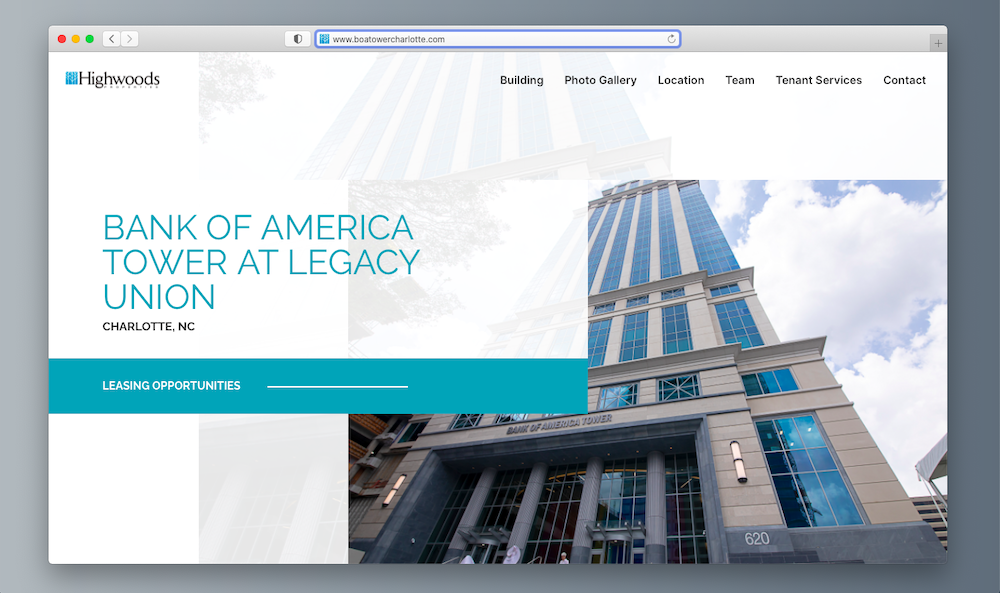
When you reliably deliver the latest, most accurate, and most detailed information about your commercial real estate offerings, prospects will see you as a trusted authority to turn to for their commercial real estate needs.
You can further develop an impression of expertise by being meticulous with your property websites and listings, offering thorough property descriptions, creating engaging interactive maps that deliver key location insights, and displaying the full scope of your portfolio while making all of your properties easily accessible via a robust search tool.
By reinforcing and layering your digital activities, you can build trust and confidence, position your company as an industry leader, and ensure you are ever relevant and ever present. The most effective way to do this is with a centralized, integrated technology stack that build on each other.
5. Create awareness
Regular business hours are from a bygone era. These days, schedules are stretched across day and night by our new normal of people working remotely from different locations while juggling different pressures.
Implementing a strong digital presence allows you to be always on, always ready to deliver an attractive presentation to a potential investor, buyer, or tenant.
If you put in the effort to do it right, your websites will do the work for you when you’re offline – continually attracting and capturing interest, engaging visitors and following them across the web to stay on their radar with targeted remarketing, and creating further opportunities to convert prospects.
It is also critical to ensure you are reaching potential buyers, investors, and tenants on every screen they may be using, which means optimizing your digital offerings for seamless delivery on all platforms and types of devices.
6. Attract more visitors
Nearly 80% of investors, tenants, and buyers start their CRE search online – and this number is certainly higher during the pandemic and will likely remain so moving forward. Expanding your digital footprint will put your properties on the screens of more prospects.
Choosing a commercial real estate marketing software can help you easily integrate social media into your sites, enhance search engine optimization (SEO) across your digital assets to boost your visibility for key search terms, and facilitate word-of-mouth referrals, social shares, and greater brand exposure by creating branded domain names.
Additionally, all-in-one web solutions like the ones SharpLaunch offers can automatically syndicate your property listings, so you will gain further exposure via top CRE listing sites and portals without having to lift a finger.
7. Get ahead of the competition
You can be sure that your competitors are scrambling to scale up their digital strategies and future-proof their businesses. In fact, the International Data Corporation (IDC) predicts that global investment in direct digital transformation will approach $6.8 trillion from 2020 to 2023.
This is across all industries, and despite the economic uncertainties caused by the pandemic.
Making smart choices by reallocating funds you had budgeted for activities that are on hold for the foreseeable future, such as in-person tradeshows and conferences, can fuel a savvy digital marketing strategy to achieve your short and long-term goals.
But to stay a step ahead of your competition, you will need nimble solutions that allow speed, efficiency, flexibility, and scalability. Now, it seems truer than ever that the only constant will be continual change, so you will need a proactive digital strategy to help keep you on your toes.
8. Make it easy to search properties
All the bells and whistles in the world will fall flat if potential buyers, investors, or tenants can’t find what they’re looking for on your site quickly and easily. As people spend more time on digital media, with the average daily consumption nearing 7.5 hours a day in 2020, digital fatigue has become an increasingly pervasive issue.
Most bleary-eyed visitors will have very little patience for anything that feels cluttered, disorganized, overly complicated, or cumbersome.
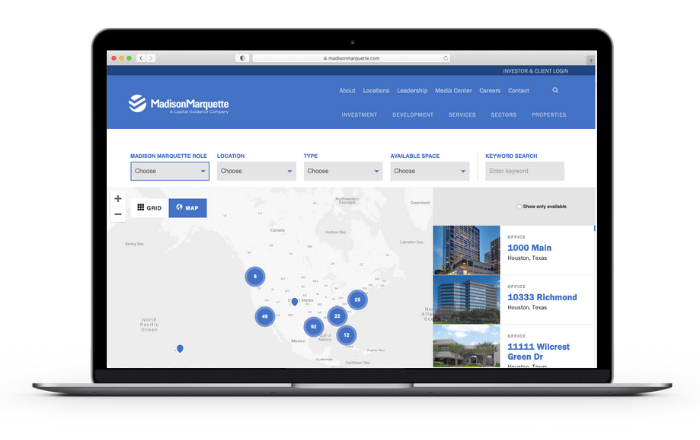
That’s why, now more than ever, it is crucial that your commercial real estate website includes a powerful, customizable property search engine.
A platform like SharpLaunch can help you seamlessly integrate all of your listings with an effortless property search experience that updates automatically in real time, tailored to your specs and perfectly aligned with your branding.
9. Centralize and interconnect your property marketing activities
By building a robust digital presence for your company and your properties, you can create a marketing hub that streamlines and reinforces all of your efforts. For example, your website can become the foundation for multichannel ad campaigns, remarketing initiatives, social media strategies, and email marketing activities.
However, you will need sophisticated software or support from a web development agency to integrate these efforts effectively.
The most cost-effective and successful choice would be an all-in-one solution that does everything well, rather than patching together different tools and services.
10. Target, track, measure engagement
Data is the superpower of digital media. Every online interaction with a prospective buyer, investor, or tenant creates a treasure trove of detailed information you can use to improve your marketing efforts. As users interact with your digital properties, they offer you valuable insights into their needs, preferences, and profiles.
You can use this data to target, segment, and tailor your outreach with more strategic, personalized approaches for specific audiences.
But even the best data is worthless if you don’t have the right tools to create marketing reports in place to process it into actionable insights. Make sure your website is capturing the key marketing metrics such as:
- website visitors
- traffic sources
- leads generated
- lead conversion rate
- document downloads
- executed CAs
You need to measure real-time performance and ROI for each of your properties, but also ensure you have access to portfolio-wide reports that simplify complex information to expedite sound decision-making.
Time is of the essence
The world is digital now. Even when the pandemic eases, many people and companies have forever altered the way they do business and interact with each other.
Some may not miss the in-person experiences involved in CRE transactions, and many may have fallen in love with the seamlessness of digital interactions. So, all those tech upgrades that have been sitting on your budget’s backburner – now is the time to really get them cooking.



